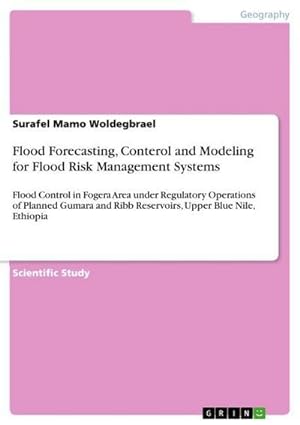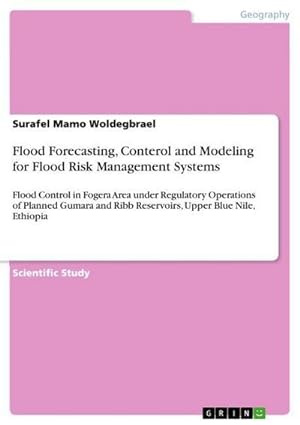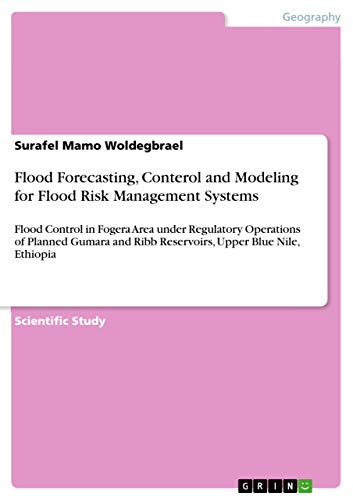9783668039483 - Flood Forecasting, Conterol and Modeling for Flood Risk Management Systems: Flood Control in Fogera Area Under Regulatory Operations of Planned Gumara and Ribb Rese... (3 results)
Product Type
- All Product Types
- Books (3)
- Magazines & Periodicals
- Comics
- Sheet Music
- Art, Prints & Posters
- Photographs
- Maps
-
Manuscripts &
Paper Collectibles
Condition
Binding
- All Bindings
- Hardcover
- Softcover
Collectible Attributes
- First Edition
- Signed
- Dust Jacket
- Seller-Supplied Images (2)
- Not Printed On Demand (2)
Seller Location
Seller Rating
-
Flood Forecasting, Conterol and Modeling for Flood Risk Management Systems
Published by GRIN Verlag Sep 2015, 2015
ISBN 10: 3668039488ISBN 13: 9783668039483
Seller: BuchWeltWeit Ludwig Meier e.K., Bergisch Gladbach, Germany
Book Print on Demand
Taschenbuch. Condition: Neu. This item is printed on demand - it takes 3-4 days longer - Neuware -Scientific Study from the year 2011 in the subject Geography / Earth Science - Regional Geography, grade: 7.70, , course: Water Science and Engineering-Hydroinformatics, language: English, abstract: A brief overview of flood control in Fogera plain, upper Blue Nile, Ethiopia is presented as the context of understanding the causes of flood problems and their solutions. The runoff from upstream Gumara and Ribb watersheds, runoff from direct rainfall, and overflows from Lake Tana along the shoreline are the main causes of flooding in the area. The most likely reasons are related to the frequent changes of catchment characteristics, agricultural development of the area, population growth and other interrelated factors. Owing to the adverse nature of flooding events, this study was focused on developing a flood control strategy under regulatory operations of the proposed reservoirs, Gumara and Ribb reservoirs, and understanding the flood behavior to reduce flood risks.The methodologies adopted were a hydrological model in HEC-HMS to generate runoff in the watersheds, simulations of the proposed reservoirs by imposing a separately developed reservoir operation rule curves. Reservoir operating rule curves were developed using Discrete Dynamic Programing (DDP). Reservoir operating rule curves play a significant role to control floods downstream. Lastly, hydrodynamic flood modeling with SOBEK 1D/2D was used in order to understand the flow dynamics and flood characteristics (such as flood extent, inundation depth and flow velocity) that enables to implement possible flood protection measures.According to this study, the combined model results were shown that the flood extent is reduced by approximately 26% due to the presence of the planned dams compared to the results without these proposed dams or the existing condition.If economically and technically feasible, some relevant mitigation measures, engineering and non-engineering measures, were proposed to reduce the flood risks. The engineering measures include construction of dykes, channel diversion, channel improvements, such as channel deepening, widening, and straightening. Non-engineering measures, including flood forecasting and early warning systems, improved land use policies, and educate local people are important. Either technically or scientifically integrated systems are also needed that supports in solving flooding problems by taking into account the significance of economic, social and different modeling approaches. 100 pp. Englisch.
-
Flood Forecasting, Conterol and Modeling for Flood Risk Management Systems : Flood Control in Fogera Area under Regulatory Operations of Planned Gumara and Ribb Reservoirs, Upper Blue Nile, Ethiopia
Published by GRIN Verlag, 2015
ISBN 10: 3668039488ISBN 13: 9783668039483
Seller: AHA-BUCH GmbH, Einbeck, Germany
Book
Taschenbuch. Condition: Neu. Druck auf Anfrage Neuware - Printed after ordering - Scientific Study from the year 2011 in the subject Geography / Earth Science - Regional Geography, grade: 7.70, , course: Water Science and Engineering-Hydroinformatics, language: English, abstract: A brief overview of flood control in Fogera plain, upper Blue Nile, Ethiopia is presented as the context of understanding the causes of flood problems and their solutions. The runoff from upstream Gumara and Ribb watersheds, runoff from direct rainfall, and overflows from Lake Tana along the shoreline are the main causes of flooding in the area. The most likely reasons are related to the frequent changes of catchment characteristics, agricultural development of the area, population growth and other interrelated factors. Owing to the adverse nature of flooding events, this study was focused on developing a flood control strategy under regulatory operations of the proposed reservoirs, Gumara and Ribb reservoirs, and understanding the flood behavior to reduce flood risks.The methodologies adopted were a hydrological model in HEC-HMS to generate runoff in the watersheds, simulations of the proposed reservoirs by imposing a separately developed reservoir operation rule curves. Reservoir operating rule curves were developed using Discrete Dynamic Programing (DDP). Reservoir operating rule curves play a significant role to control floods downstream. Lastly, hydrodynamic flood modeling with SOBEK 1D/2D was used in order to understand the flow dynamics and flood characteristics (such as flood extent, inundation depth and flow velocity) that enables to implement possible flood protection measures.According to this study, the combined model results were shown that the flood extent is reduced by approximately 26% due to the presence of the planned dams compared to the results without these proposed dams or the existing condition.If economically and technically feasible, some relevant mitigation measures, engineering and non-engineering measures, were proposed to reduce the flood risks. The engineering measures include construction of dykes, channel diversion, channel improvements, such as channel deepening, widening, and straightening. Non-engineering measures, including flood forecasting and early warning systems, improved land use policies, and educate local people are important. Either technically or scientifically integrated systems are also needed that supports in solving flooding problems by taking into account the significance of economic, social and different modeling approaches.
-
Flood Forecasting, Conterol and Modeling for Flood Risk Management Systems: Flood Control in Fogera Area under Regulatory Operations of Planned Gumara and Ribb Reservoirs, Upper Blue Nile, Ethiopia
Published by GRIN Verlag, 2015
ISBN 10: 3668039488ISBN 13: 9783668039483
Seller: Mispah books, Redhill, SURRE, United Kingdom
Book
Paperback. Condition: Like New. Like New. book.




